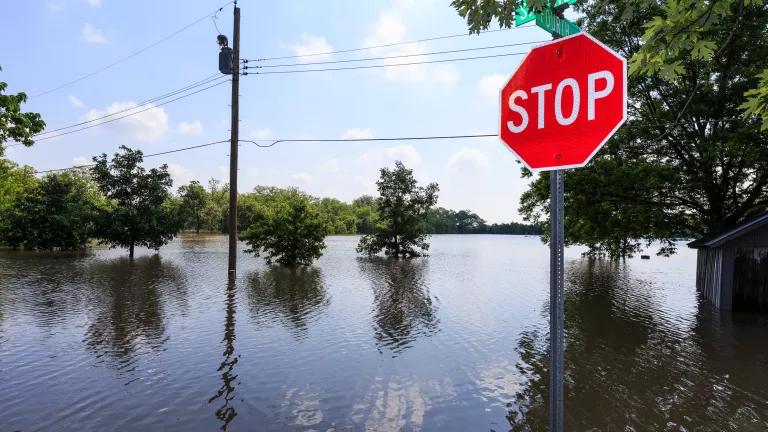
This is the first in a short series where I’ll take a look at the National Flood Insurance Program, some of its failings, and how it might better support preparations for our climate future.
As we look towards a future where climate change will bring rising sea levels and more frequent and severe storms, we also expect to see more frequent and severe flooding along our rivers and coastlines. That means property owners will increasingly turn to the Federal Emergency Management Agency (FEMA) and its National Flood Insurance Program to bail them out.
But why does the federal government underwrite 5.6 million flood insurance policies, in many cases at highly subsidized rates?
Originally, the National Flood Insurance Program was intended to provide insurance to people who could not get flood insurance from private insurance companies. In the past, flood insurance was not easy to come by, since private insurers had largely left this market. Beyond providing insurance, the program was also tasked with mapping out the nation’s most flood prone areas and helping communities prepare for and avoid damage from flooding. In a sense, the program was intended to manage the nation’s risk from flooding.
But in practice, it has not managed that risk very well. One could argue that it has, in part, incentivized the development of floodplains and coastal areas. At best, it has failed to provide a disincentive.
Just last week the National Academy of Sciences published a report about the National Flood Insurance Program. The report looks specifically at how levees are addressed by the program and we’ll return to that topic in a future post. But this report also includes a very good overview of the program since its inception and its many past problems, which include those described below.
Discounts for the riskiest structures: Nineteen percent of policy holders receive discounts on federal flood insurance simply because the property was built before the first flood insurance maps were produced or because no elevation data existed.
Grandfathering: When flood maps have been updated to reflect greater flood risks, current policy holders often pay the same premiums, or a discounted rate, even if they’ve been found to be at higher risk of flooding.
A short-sighted system for balancing the books: the federal government calculates its potential financial exposure by looking at the average flood losses from previous years, while discounting damages from major events that they consider to be statistical outliers, like Hurricanes Katrina and Sandy. This “Average Historical Loss” is then used to adjust premiums to balance the books for a given year, while overlooking the longer-term financial risk.
Outdated maps: The flood maps used to determine the areas most likely to flood are outdated, although FEMA is in the process of updating them. The new maps rely on more up-to-date hydrological data, elevation data and land use information. Not surprisingly the newer maps show that a larger area is at risk of flooding. But even these updated maps fail to incorporate climate related impacts like sea level rise or more intense storms, which would expand the extent of the flood prone area even further.
Treatment of levees: Problems have existed and persist with how the program treats properties behind levees. Essentially, if a levee is certified to provide protection against a 100-year flood, then properties behind the levee can purchase flood insurance at a lower price or not purchase it at all. This has created a perverse incentive to build levees, which convey a false sense of security to property owners. Also, there’s the question of whether a levee built to withstand the 100-year flood is adequate, given that 100-year floods have an annoying way of occurring more frequently than once every hundred years and that’s probably going to get worse as the climate warms.
Given these shortcomings it’s not surprising that the program will be between $25 billion and $30 billion in debt once all claims from Hurricane Sandy are paid out. It’s a program that is almost designed to fail.
Reforms have been made. Just last year the Biggert Waters Flood Insurance Reform Act put in place much needed reforms that begin to address some of the problems described above, but a lot more needs to be done. These common sense reforms (which we’ll look at in a future post) are getting a lot of push back as property owners find out that they will pay higher premiums that more accurately reflect their flood risk.
We should ask, “What is the purpose of the National Flood Insurance Program?”
The way the program has evolved it’s purpose seems to have less to do with fixing problems associated with flooding, than prolonging those problems.
It’s purpose should be to prepare us for a future where flooding is going to be more frequent and severe. It should provide a social safety net for flood victims. It should be there to help people get their lives back together and to perhaps relocate to a safer location, outside the area where floods are most likely. It should be guiding the nation to a place where we are less at risk, particularly as our climate warms.
But so far it has failed to deliver.
Next Week: The Biggert Waters Flood Insurance Reform Act…and the backlash

